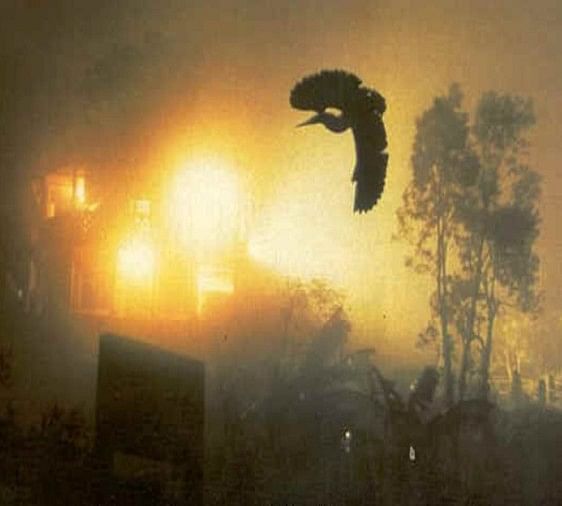The phenomenon has been the subject of much speculation and folklore, with locals attributing it to supernatural forces or other mystical explanations. However, scientists and researchers who have studied the phenomenon have offered more rational explanations for it. Some have suggested that the birds are attracted to the village's bright lights during foggy or moonless nights, which can disorient them and cause them to fly towards the lights instead of following their usual migration routes. Others have suggested that the birds may be following each other in a mass panic, or that they are attracted to the insects that swarm around the village during the monsoon season.
Whatever the cause, the phenomenon has attracted the attention of scientists and bird enthusiasts from around the world, and Jatinga has become a popular destination for birdwatchers who come to observe the mass bird suicides. However, conservationists have raised concerns about the impact of human activity on the birds and their habitats, and have called for measures to protect the birds and their migration routes.
After the birds crash into buildings and trees in Jatinga, many of them die due to the impact. However, some of them may also be injured or stunned, and are unable to fly. The locals in Jatinga believe that the birds are possessed by evil spirits, and therefore, they catch and kill the birds for their meat or feathers.
However, in recent years, efforts have been made to prevent the killing of the birds, and instead, to rescue and rehabilitate them. Conservationists and wildlife authorities in Assam have set up bird rescue centers in Jatinga to provide medical care and rehabilitation for the injured birds. The rescued birds are treated for their injuries, and once they have recovered, they are released back into the wild.
It is important to note that the mass bird suicide phenomenon at Jatinga is not a natural behavior for these migratory birds, and it is believed to be caused by a variety of factors, including the bright lights of the village, weather conditions, and other environmental factors. Therefore, efforts are being made to better understand this phenomenon and to mitigate the impact of human activities on the birds and their habitats.
While the mass bird suicide phenomenon at Jatinga is certainly a cause for concern and warrants further study, it is not likely to have a significant impact on the overall population of migratory birds in the long term. However, it is important for local communities and authorities to work together to ensure that these birds are protected and that their habitats are conserved for future generations.
There are several factors that are thought to contribute to this phenomenon and make it unique to Jatinga, including:
Weather conditions: Jatinga is located in a region that experiences heavy monsoon rains and fog during the months of August to November. This weather pattern can create conditions that are conducive to bird disorientation, which may cause them to fly towards the bright lights of the village.
Geographic location: Jatinga is situated on a hilltop that is surrounded by dense forests and valleys. This topography may act as a barrier for the birds, preventing them from finding their way out of the area and causing them to crash into buildings and trees.
Light pollution: Jatinga is known for its bright lights, which are used by the villagers to attract fish and other animals. These lights can also attract birds, which may become disoriented and end up crashing into buildings and trees.
Migration routes: Jatinga is located on a major migratory route for many bird species, which may contribute to the large number of birds that are observed during the phenomenon.
Overall, the unique combination of weather patterns, geography, and human activity in Jatinga may be responsible for the mass bird suicide phenomenon in this particular area, and it is not observed in other regions. While similar behaviors have been reported in other parts of the world, they are typically associated with different factors and are not identical to the phenomenon observed in Jatinga.
While there has been some research into the causes of the mass bird suicide phenomenon at Jatinga, there is still no definitive answer as to what causes the birds to behave in this way. While some of the factors that I mentioned earlier, such as weather patterns and light pollution, have been suggested as possible contributing factors, the exact mechanisms behind this behavior are still not fully understood.
Furthermore, there is ongoing debate among researchers as to whether the birds are actually committing suicide or whether there is some other explanation for their behavior, such as disorientation or exhaustion. Some experts believe that the birds may be attracted to the lights of the village and become disoriented, while others suggest that the birds may be exhausted after a long flight and simply crash into buildings and trees in the area.
Overall, while there has been some research into the causes of the mass bird suicide phenomenon at Jatinga, more studies are needed to fully understand this behaviour and its underlying causes.





No comments:
Post a Comment